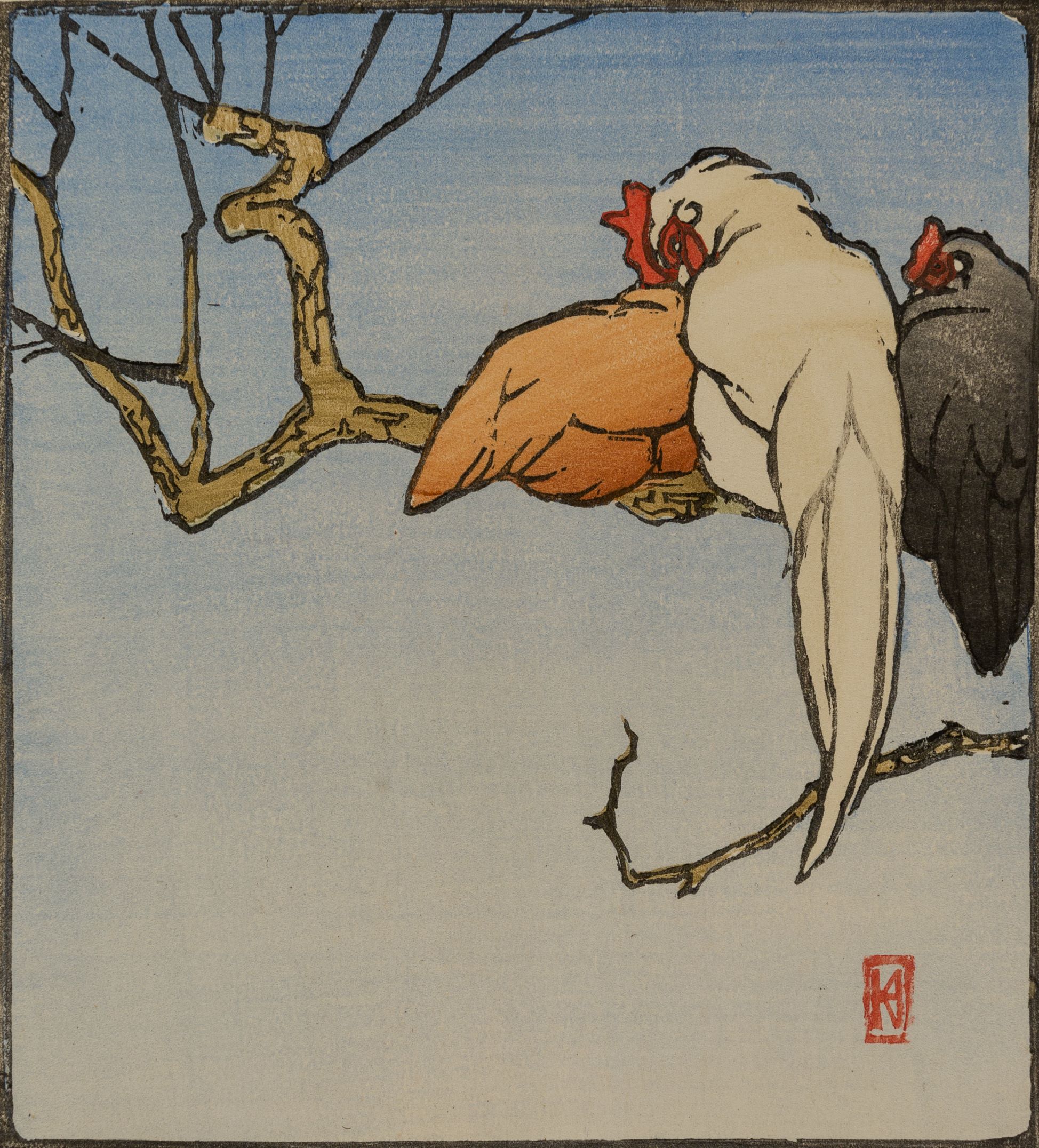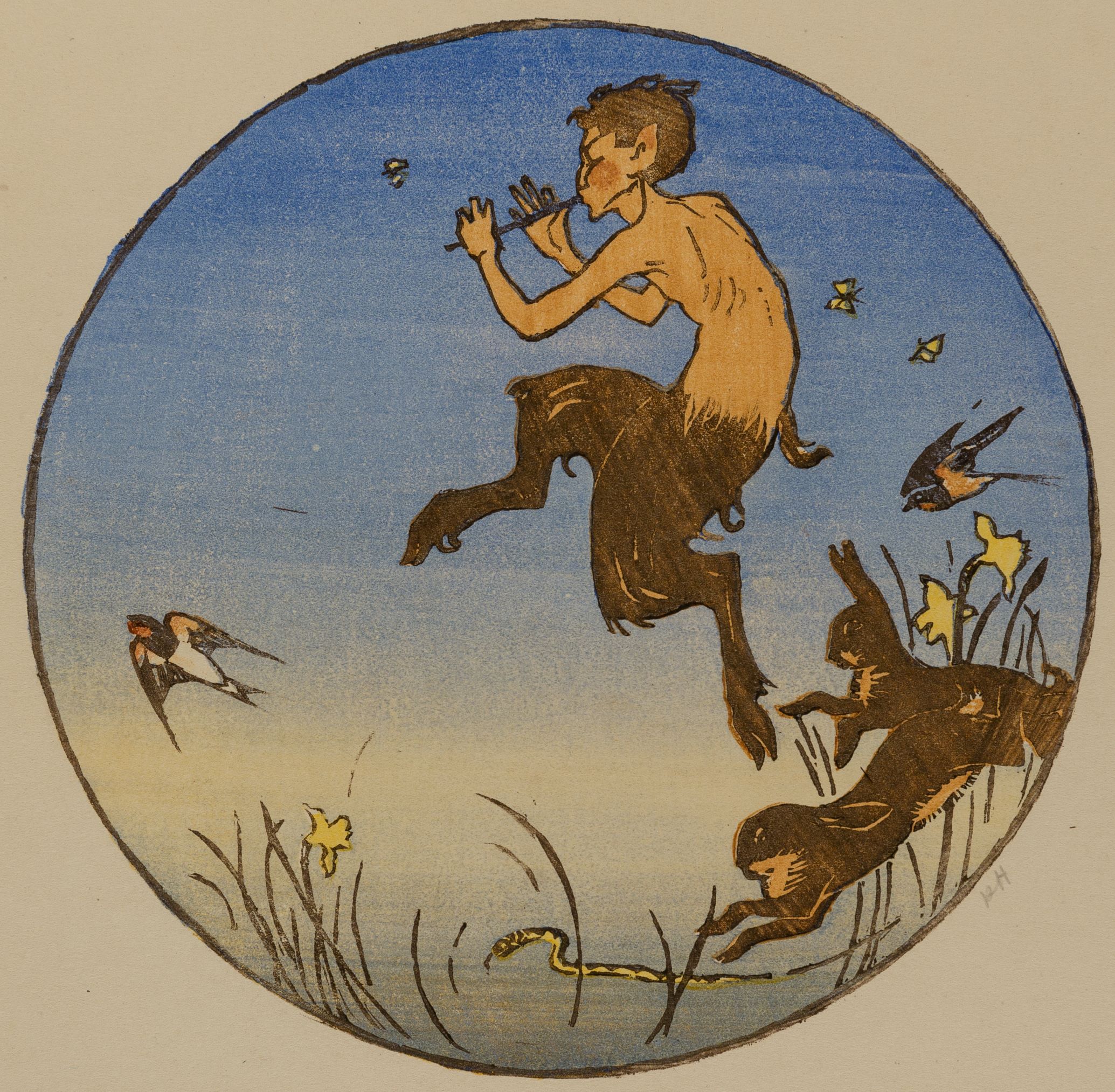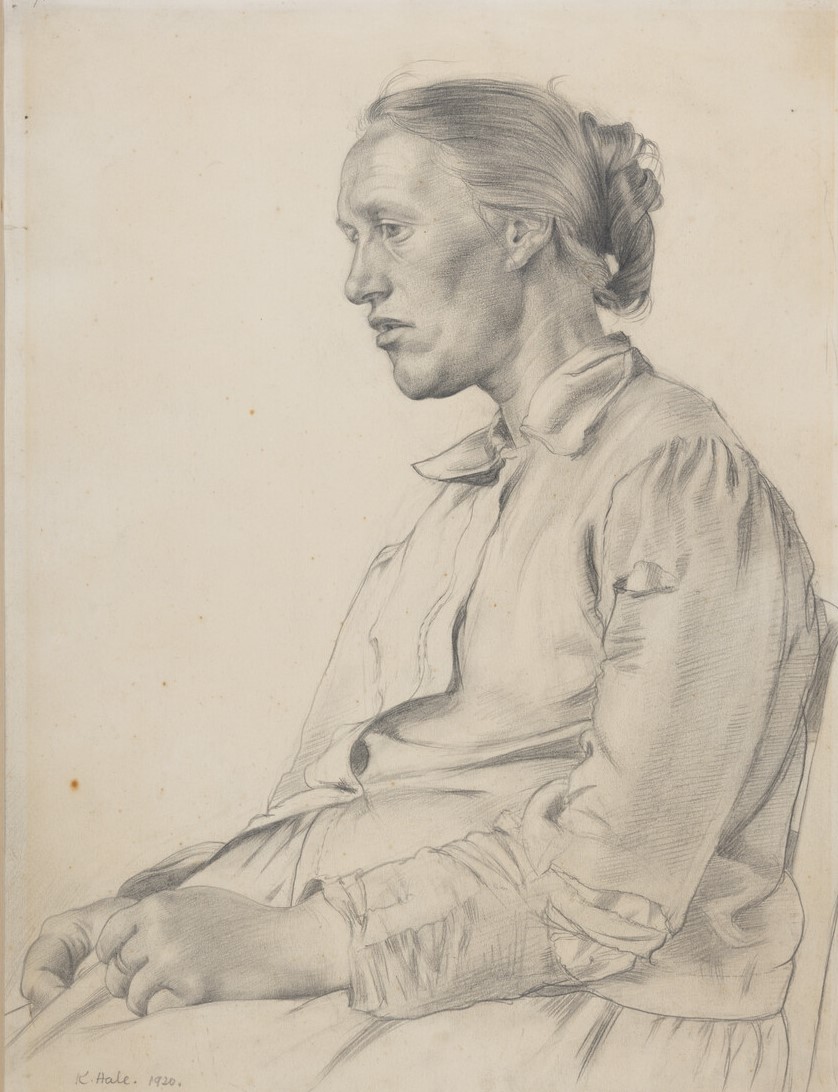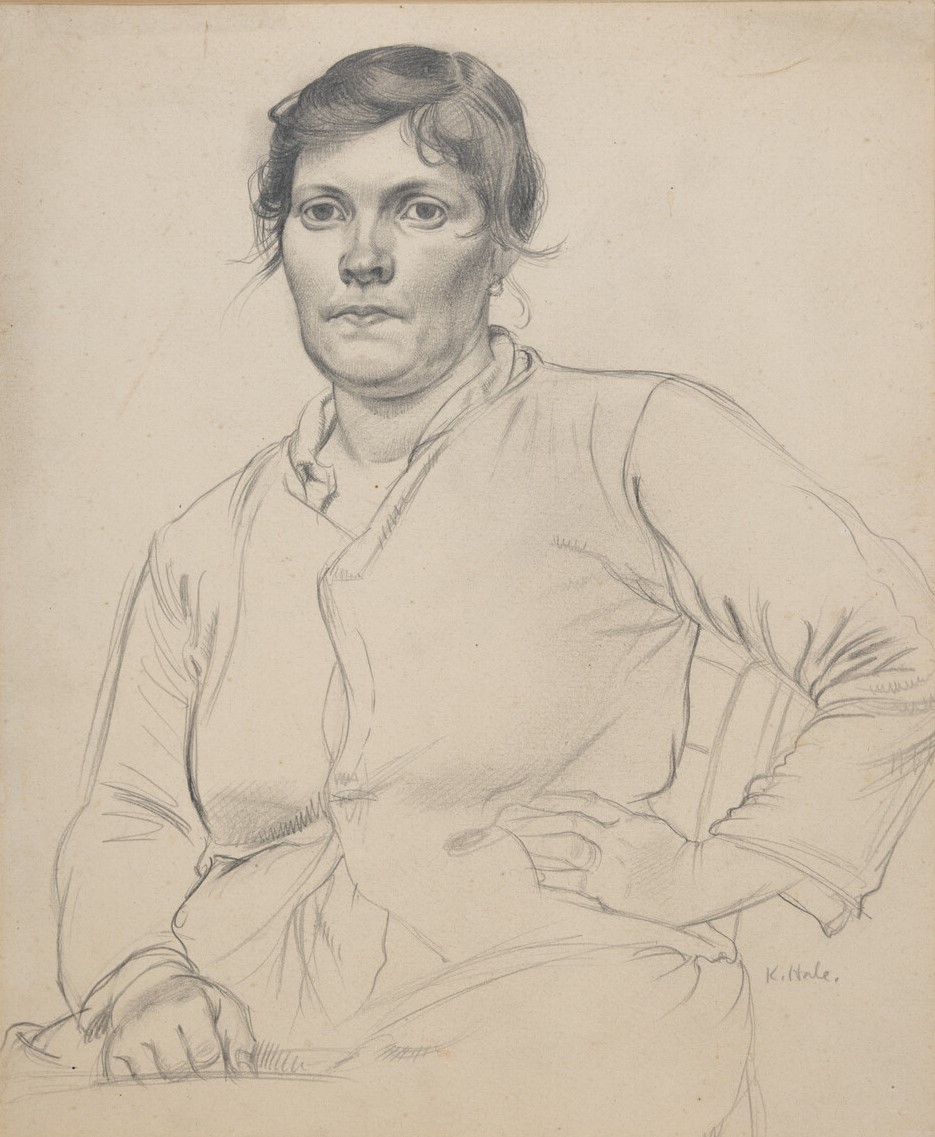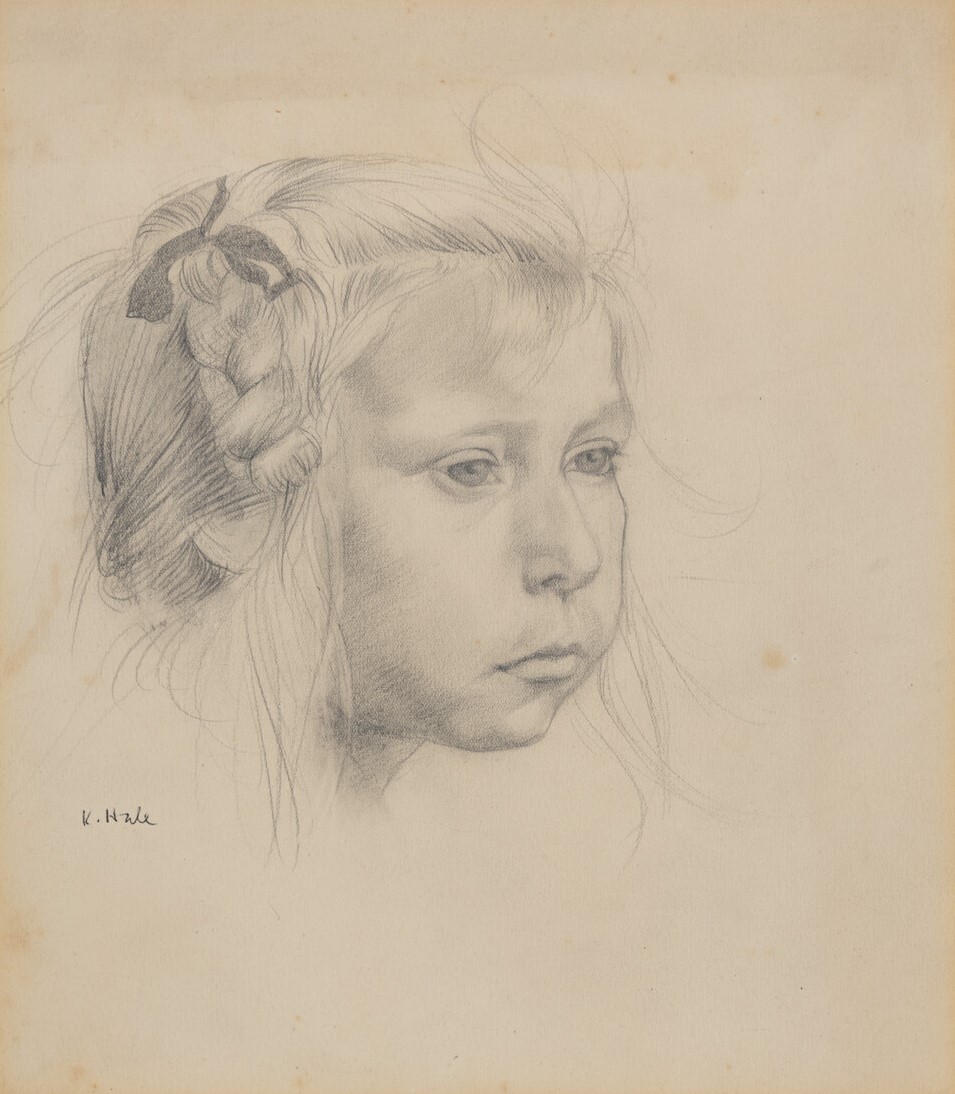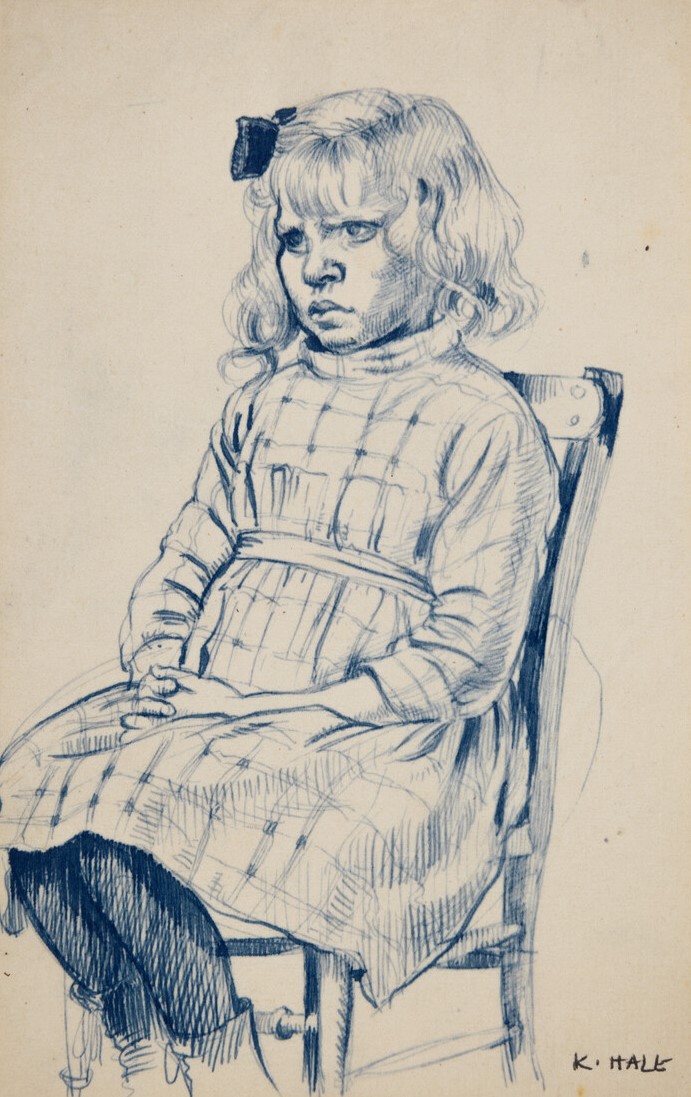Kathleen Hale: Before the illustrations of Orlando
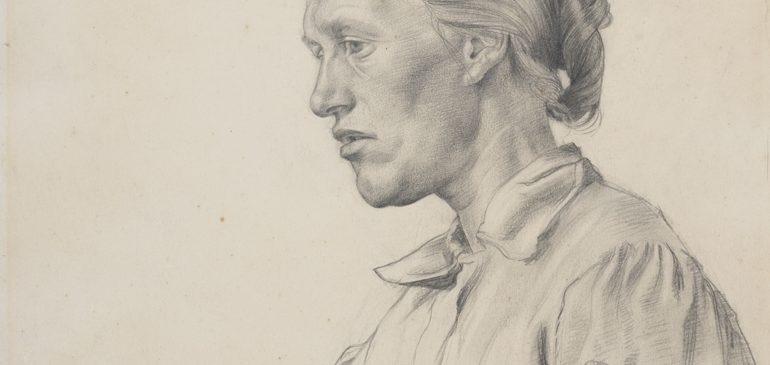
For her placement module, 3rd Year History Student, Holly Whapshott has been researching some of our most recent acquisitions by artist Kathleen Hale
In March 2022, the University Art Collection bought six portraits by Reading alumni, Kathleen Hale. During my placement with the collection, I have been researching these artworks and Hale herself. This fit in perfectly with my longstanding interest in women’s history, particularly during the World Wars.
Born in Lanarkshire Scotland, Kathleen Hale (1898-2000) is best known for her illustrated children’s book series, ‘Orlando the Marmalade Cat.’ This series was first published in 1938, after years of rejection, and led to her receiving an OBE in 1976 for her work as an illustrator. Did this validate the years she spent trying to compete with her male artistic peers who had gained profit and fame from their artwork? Who was Hale before Orlando?

The Beginnings
After winning a scholarship to study art, Hale attended the University College Reading (later the University of Reading) from 1915 to 1917. She was taught by Allen William Seaby (1867-1953), a former student himself, who had become Head of the Department of Fine Art a few years earlier in 1911. A master of the technique, Seaby focused on Japanese woodblock printing in his class, which disappointed Hale who yearned to learn oil painting.
- Kathleen Hale, Fowls, woodcut on paper, 1923, Miscellaneous Prints Collection. © Estate of Kathleen Hale
- Kathleen Hale, The Fawn, woodcut on paper, 1923, Miscellaneous Prints Collection. © Estate of Kathleen Hale
Following her time in Reading, Hale was determined to go to London, selling her bicycle for a one-way ticket. But World War One impacted Hale’s ability to break into the art world. She worked in a variety of places throughout the war, including the Ministry of Food and with the Land Army, while continuing to sketch and paint any chance she could. The few art-related jobs she had didn’t pay much and were not long-term.
A Struggling Artist?
After the war, Hale lived with the famous artist Augustus John (1878-1961) as his assistant and would paint portraits for those who could not afford John’s work. However, what could have been the start of a promising career was not to be. Hale struggled to afford the oil paints and canvases needed to work as a portrait painter.
This fight to be taken seriously as an artist was a familiar plight for many other women of the period. Indeed, Hale herself, was not the only woman in John’s circle trying to make a living from her art. Despite receiving the same art education at the Slade School of Art, John’s own sister, Gwen John (1876-1939) was overshadowed by her brother.
The difference in the sibling’s artistic prospects could not be better shown than at their joint exhibition in 1903 at the Carfax Gallery, London; where, in comparison to Augustus’ 45 pieces, Gwen John only displayed three paintings.
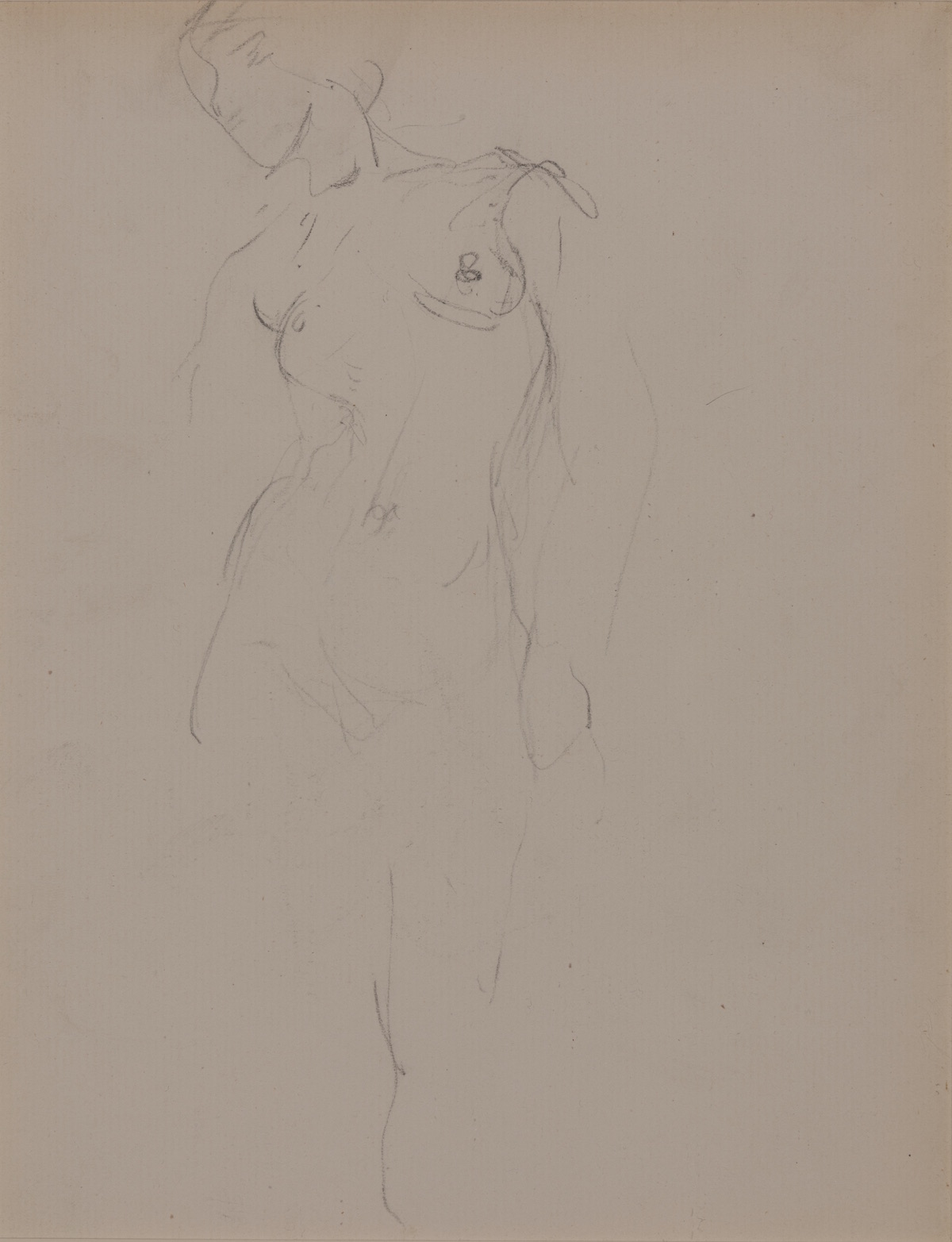
Advocating for her Work
Hale continued to work towards a career in portraiture, but these works were often disregarded. Ultimately, she made the decision to focus on illustrations for her children’s books, which finally allowed her to make a name for herself.
However even when Hale’s illustration and stories of ‘Orlando the Marmalade Cat’ finally became popular, she still had to advocate for her work. She particularly had to fight for the use of colour printing for her illustrations.
Hale knew her illustrations should be in colour, but because multiple printing plates would have to be created, this was much more expensive than black and white printing. To save her publisher money, Hale volunteered to create the lithographic plates needed for the colour printing herself.
The Portraits
Hale is a model example of a woman artist who was unable to succeed in a career in art until she turned her focus to creating children’s illustrations. Her early work, including these six pieces, had much been overlooked and forgotten about. I find these sketches interesting and unique. As these communities would not usually be the stereotypical ideal of those that sat for portraits.
These portraits were created by Hale during a visit to Étaples, France, in 1920, which she spent drawing poor fisherwomen and their children. More than 200 artists settled in Étaples from the late 1800s to early 1900s due to its cheap cost of living. Its poverty-stricken fishing scenery and people were painted by many artists. They paid their models for their time, leaving them thankful as it paid more and was more pleasant than catching fish in the cold sea.
- Kathleen Hale, Portrait of a woman in profile, pencil on paper, 1920, UAC/11070. © Estate of Kathleen Hale
- Kathleen Hale, Portrait of a French Peasant Woman, pencil on paper, 1920, UAC/11071. © Estate of Kathleen Hale
- Kathleen Hale, Portrait of a boy in a cap, pencil on paper, 1920, UAC/11072. © Estate of Kathleen Hale
- Kathleen Hale, Portrait of a little girl, pencil on paper, 1920, UAC/11073. © Estate of Kathleen Hale
- Kathleen Hale, Portrait of a boy in a cap in three-quarter profile, pencil on paper, 1920, UAC/11074. © Estate of Kathleen Hale
- Kathleen Hale, Portrait of a girl sitting on a chair with a checked dress, pen on paper, 1920, UAC/11075. © Estate of Kathleen Hale
However, after the war broke out, the artists fled, leaving little to no accounts about the people they met and painted. While I tried to research this topic from the perspective of female artists, alongside Kathleen Hale, sadly as in many aspects of this period male artists dominated the historical records.
If you would like to learn more about Kathleen Hale and her work, you can view her art in the University of Reading Art Collection.
